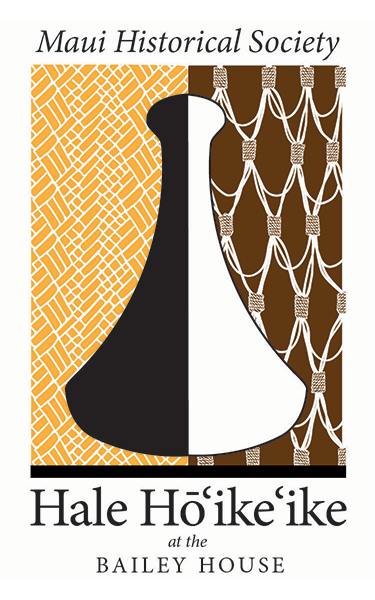Shop & Support Local
A curated collection of Made on Maui and Made in HI merchandise. Items listed are one of a kind and are limited in quantities. All proceeds from gift shop sales go directly to fulfilling Maui Historical Society’s mission.
Nake’u Awai Designs
Dancer
After graduating from Kamehameha Schools and receiving a degree in drama from the University of Washington in Seattle, Nakeʻu lived a busy, exciting life as a dancer and performer, living and traveling in New York, Europe, and Los Angeles.
Fashion Designer
In the 1960s, even though Nakeʻu had no formal training as a designer, a choreographer in L.A. encouraged him to try costume design, which led him to the world of fashion.
After working with Bob Mackie and other big names in fashion, Nakeʻu returned home to Oʻahu in the early 1970s where he established his own fashion line and married the knowledge and experience he had gained with Hawaiian culture.
Hawaiʻi’s First
Native Hawaiian
Fashion Designer
Often touted as the Grandfather of Hawaiʻi fashion, Nakeʻu was the first Hawaiian designer to locally create prints using native and indigenous flora as inspiration (what’s come to be known as “Hawaiian print”).
He also produced the first muʻumuʻu (a loose gown) and holokū (a loose, seamed dress with a yoke and train) to be sold commercially at Carol and Mary, an iconic women’s fashion store at the time, and the Liberty House department store, making Hawaiian fashion accessible to the masses.
Mentor
Through trial and error, determination and an indomitable creative spirit, Nakeʻu has made his mark on Hawaiʻi’s fashion industry. Today, he is seen as a mentor whose support and encouragement to other local designers, artists, and crafts people reflects his strong sense of Hawaiʻi. Nake‘u has a long history working with Sig Zane, Danene Lunn of Manuhealiʻi and Manaola Yap of Manaola Hawai‘i.
Kuba
Kreation
Kuba is a local artist on Maui, inspired by the lush landscapes and vibrant plants surrounding her. She transforms green leaves from the hala tree into intricate jewelry, reflecting her deep appreciation for nature.
Her process begins with harvesting the vibrant green leaves from the Hala tree. After removing the thorns and midrib, she rolls the leaves into a kuka’a then boils them in a mixture of water, lemon juice, and a touch of dish soap until they resemble the color of laulau. Once rinsed and dried in the sun, the leaves take on a beautiful cream color, a result of the bleaching effect of the lemon juice combined with the sun’s natural drying process.
Kuba softens the fibers by passing the lauhala strands through a pasta maker, preparing them for weaving. She then uses a wood stripper to create strips of varying widths, tailored to the specific items she crafts.
Color plays a significant role in Kuba’s work, as she believes it is a personal preference. Drawing parallels between kapa and lauhala dyeing, she has honed her skills through extensive trial and error. Her distinctive palette includes bold hues like olena, a vibrant yellow derived from turmeric, alongside a growing interest in natural plant dyes, experimenting with berries and noni to create rich, organic colors.
Meticulous in her leaf selection, Kuba understands that the vibrancy of the leaves is influenced by their environment. With each piece she creates, Kuba invites viewers to appreciate the intricate beauty of nature and the artistry that arises from it.



